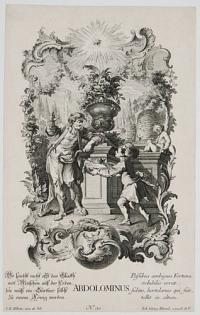
Abdolominus Wie spiehlt nicht offt das Gluck [...]
J.E. Nilson inv et del. B.S. Setletsky sc. [lower right of image]
Joh. George Hertel, excud. A.V. 1
Etching, sheet 340 x 215mm (13½ x 8½"). Trimmed inside platemark.
This scene probably relates to the play 'Abdolominus' by French playwright Gabriel-Francois Le Jay (1657-1734). In this play, Alexander the Great appoints his distant relative Abdolomines king of Sidon. Abdolomines preferred to live a simple life, and here he is offered the crown while he dwells in a splendid natural setting. With rococo border and verses in German and Latin below. From a set of decorative prints etched from designs by Johann Esaias Nilson (1721-88), 'the German Watteau'. Nilson was part of a family of artists and established himself as the leading Augsburg artist of his day, whose influence extended across publishing, art academies, a role as court painter, and the decorative arts (especially ceramics).
[Ref: 33168] £140.00
(£168.00 incl.VAT)
![[Life of Aesop: Aesop convicting his fellow servants of having eaten the figs.]](img-thumbnail/jpegs/48708.jpg)
[Life of Aesop: Aesop convicting his fellow servants of having eaten the figs.] [So thrive false witnesses...]
[Etched by Thomas Dudley after Francis Barlow.]
[Amsterdam: Etiènne Roger, 1714.]
Etching. Sheet 205 x 165mm (8 x 6½") Trimmed within plate, mounted on album paper.
Aesop, having beeen accused of eating his master's figs, has vomited to show he had eaten nothing, then insists his accusers do the same, proving their guilt. Plate 1 of thirty-one illustrations added to the second edition of Barlow's "Æsop's Fables, With His Life" (1687), to illustrate the translation of Planudes's Life of Aesop, which was unillustrated in the first edition of 1666. This example comes from an Amsterdam edition, 'Les Fables d'Esope', with the printing plate trimmed down. All of the plates were designed by Barlow: they were etched c.1678-9, only five by Barlow; the rest, including this one, by Thomas Dudley. Originally the plate extended down with a title verse (possibly written by Aphra Behn, who wrote new verses for the fables), but for this non-English edition the verse was trimmed off and new borders engraved. Little is known of Dudley: on one plate of this series he signed himself as a student of Wenceslaus Hollar; and in 1679 he went to Lisbon, where he is known to have made further prints, and he is not supposed to have returned to England thereafter. He etched some portraits but these prints after Barlow are his most important work. BM: 1871,0812.235, described as a proof state.
[Ref: 48708] £95.00
(£114.00 incl.VAT)
![[Life of Aesop: Aesop resolving the gardener's problem.]](img-thumbnail/jpegs/48712.jpg)
[Life of Aesop: Aesop resolving the gardener's problem.] [No more you learned fops...]
Tho: Dudley fecit [after Francis Barlow.]
[Amsterdam: Etiènne Roger, 1714.]
Proof etching. Sheet 205 x 165mm (8 x 6½") Trimmed within plate, mounted on album paper.
A gardener asks of Xanthus why his cultivated herbs did not grow as well as wild ones. Aesop replied that Mother Nature regarded them as step-children rather than her own. Plate 7 of thirty-one illustrations added to the second edition of Barlow's "Æsop's Fables, With His Life" (1687), to illustrate the translation of Planudes's Life of Aesop, which was unillustrated in the first edition of 1666. This example comes from an Amsterdam edition, 'Les Fables d'Esope', with the printing plate trimmed down. All of the plates were designed by Barlow: they were etched c.1678-9, only five by Barlow; the rest, including this one, by Thomas Dudley. Originally the plate extended down with a title verse (possibly written by Aphra Behn, who wrote new verses for the fables), but for this non-English edition the verse was trimmed off and new borders engraved. Little is known of Dudley: on one plate of this series he signed himself as a student of Wenceslaus Hollar; and in 1679 he went to Lisbon, where he is known to have made further prints, and he is not supposed to have returned to England thereafter. He etched some portraits but these prints after Barlow are his most important work. BM: 1871,0812.241, described as a proof state.
[Ref: 48712] £110.00
(£132.00 incl.VAT)
![[Life of Aesop: Aesop ordered by Xanthus to take a dish to her that loves him best.]](img-thumbnail/jpegs/48699.jpg)
[Life of Aesop: Aesop ordered by Xanthus to take a dish to her that loves him best.] [A Wife, or Dog, as certaine reasons prove...]
Tho: Dudley fecit 1678 [after Francis Barlow].
[Amsterdam: Etiènne Roger, 1714.]
Proof etching. Sheet 205 x 165mm (8 x 6½") Trimmed within plate, mounted on album paper.
Xanthus, Aesop's master, hands a dish of meat to Aesop, expecting him to give it to his wife. However Aesop gives in to a dog, seen in the background. Top right are musicians in a gallery Plate 8 of thirty-one illustrations added to the second edition of Barlow's "Æsop's Fables, With His Life", to illustrate the translation of Planudes's Life of Aesop, which was unillustrated in the first edition of 1666. This example comes from an Amsterdam edition, 'Les Fables d'Esope', with the printing plate trimmed down. All of the plates were designed by Barlow: they were etched c.1678-9, only five by Barlow; the rest, including this one, by Thomas Dudley. Originally the plate extended down with a title verse (possibly written by Aphra Behn, who wrote new verses for the fables), but for this non-English edition the verse was trimmed off and new borders engraved. Little is known of Dudley: on one plate of this series he signed himself as a student of Wenceslaus Hollar; and in 1679 he went to Lisbon, where he is known to have made further prints, and he is not supposed to have returned to England thereafter. He etched some portraits but these prints after Barlow are his most important work. BM: 1871,0812.243, described as a proof state.
[Ref: 48699] £95.00
(£114.00 incl.VAT)
![[Life of Aesop: Aesop serving tongues.]](img-thumbnail/jpegs/48715.jpg)
[Life of Aesop: Aesop serving tongues.] [The maryed men afronted at the jest...]
[Etched by Thomas Dudley after Francis Barlow.]
[Amsterdam: Etiènne Roger, 1714.]
Proof etching. Sheet 205 x 165mm (8 x 6½") Trimmed within plate, mounted on album paper.
Aesop, ordered to serve a dinner of the best, serves up tongues at every course to Xanthus and his guests. When confronted, Aesop replies ''What excels the tongue? It is the great channel of learning and philosophy''. Plate 10 of thirty-one illustrations added to the second edition of Barlow's "Æsop's Fables, With His Life" (1687), to illustrate the translation of Planudes's Life of Aesop, which was unillustrated in the first edition of 1666. This example comes from an Amsterdam edition, 'Les Fables d'Esope', with the printing plate trimmed down. All of the plates were designed by Barlow: they were etched c.1678-9, only five by Barlow; the rest, including this one, by Thomas Dudley. Originally the plate extended down with a title verse (possibly written by Aphra Behn, who wrote new verses for the fables), but for this non-English edition the verse was trimmed off and new borders engraved. Little is known of Dudley: on one plate of this series he signed himself as a student of Wenceslaus Hollar; and in 1679 he went to Lisbon, where he is known to have made further prints, and he is not supposed to have returned to England thereafter. He etched some portraits but these prints after Barlow are his most important work. BM: 1871,0812.252, described as a proof state.
[Ref: 48715] £95.00
(£114.00 incl.VAT)
![[Life of Aesop: Aesop taken to prison.]](img-thumbnail/jpegs/48710.jpg)
[Life of Aesop: Aesop taken to prison.] [How vaine are mens designes...]
Tho: Dudley fecit [after Francis Barlow.]
[Amsterdam: Etiènne Roger, 1714.]
Proof etching. Sheet 205 x 165mm (8 x 6½") Trimmed within plate, mounted on album paper.
Having found treasure for Xanthus, Xanthus still orders Aesop to be imprisoned. Aesop complains of the bad faith and is released. Plate 14 of thirty-one illustrations added to the second edition of Barlow's "Æsop's Fables, With His Life" (1687), to illustrate the translation of Planudes's Life of Aesop, which was unillustrated in the first edition of 1666. This example comes from an Amsterdam edition, 'Les Fables d'Esope', with the printing plate trimmed down. All of the plates were designed by Barlow: they were etched c.1678-9, only five by Barlow; the rest, including this one, by Thomas Dudley. Originally the plate extended down with a title verse (possibly written by Aphra Behn, who wrote new verses for the fables), but for this non-English edition the verse was trimmed off and new borders engraved. Little is known of Dudley: on one plate of this series he signed himself as a student of Wenceslaus Hollar; and in 1679 he went to Lisbon, where he is known to have made further prints, and he is not supposed to have returned to England thereafter. He etched some portraits but these prints after Barlow are his most important work. BM: 1871,0812.247, described as a proof state.
[Ref: 48710] £95.00
(£114.00 incl.VAT)
![[Life of Aesop: Beaten by Xanthus.] [Philosophers like Fortune-tellers thrive,](img-thumbnail/jpegs/48698.jpg)
[Life of Aesop: Beaten by Xanthus.] [Philosophers like Fortune-tellers thrive, / Those by false notions, these false flateries live, / And those as oft true vertue do mistake, / As these false auguries, and predictions make.]
[Etched by Thomas Dudley after Francis Barlow.]
[Amsterdam: Etiènne Roger, 1714.]
Proof etching. Sheet 200 x 165mm (8 x 6½"). Trimmed within plate, mounted on album paper.
Aesop as a slave on Samos, being beaten by his owner Xanthus for saying he had seen two crows, when only one was in sight. Plate 16 of thirty-one illustrations added to the second edition of Barlow's "Æsop's Fables, With His Life", to illustrate the translation of Planudes's Life of Aesop, which was unillustrated in the first edition of 1666. This example comes from an Amsterdam edition, 'Les Fables d'Esope', with the printing plate trimmed down. All of the plates were designed by Barlow: they were etched c.1678-9, only five by Barlow; the rest, including this one, by Thomas Dudley. Originally the plate extended down with a title verse (possibly written by Aphra Behn, who wrote new verses for the fables), but for this non-English edition the verse was trimmed off and new borders engraved. Little is known of Dudley: on one plate of this series he signed himself as a student of Wenceslaus Hollar; and in 1679 he went to Lisbon, where he is known to have made further prints, and he is not supposed to have returned to England thereafter. He etched some portraits but these prints after Barlow are his most important work. BM: 1871,0812.249, described as a proof state.
[Ref: 48698] £95.00
(£114.00 incl.VAT)
![[Life of Aesop: Aesop kneeling before king Croesus.]](img-thumbnail/jpegs/48714.jpg)
[Life of Aesop: Aesop kneeling before king Croesus.] [Of all the graces, Heaven in man designd...]
[Etched by Thomas Dudley after Francis Barlow.]
[Amsterdam: Etiènne Roger, 1714.]
Proof etching. Sheet 205 x 165mm (8 x 6½") Trimmed within plate, mounted on album paper.
Aesop negotiates with Croesus to prevent war between Lydia and Samos. Plate 21 of thirty-one illustrations added to the second edition of Barlow's "Æsop's Fables, With His Life" (1687), to illustrate the translation of Planudes's Life of Aesop, which was unillustrated in the first edition of 1666. This example comes from an Amsterdam edition, 'Les Fables d'Esope', with the printing plate trimmed down. All of the plates were designed by Barlow: they were etched c.1678-9, only five by Barlow; the rest, including this one, by Thomas Dudley. Originally the plate extended down with a title verse (possibly written by Aphra Behn, who wrote new verses for the fables), but for this non-English edition the verse was trimmed off and new borders engraved. Little is known of Dudley: on one plate of this series he signed himself as a student of Wenceslaus Hollar; and in 1679 he went to Lisbon, where he is known to have made further prints, and he is not supposed to have returned to England thereafter. He etched some portraits but these prints after Barlow are his most important work. BM: 1871,0812.252, described as a proof state.
[Ref: 48714] £95.00
(£114.00 incl.VAT)
![[Life of Aesop: Aesop welcomed on his return to Samos from the court of Lydia.]](img-thumbnail/jpegs/48707.jpg)
[Life of Aesop: Aesop welcomed on his return to Samos from the court of Lydia.] [When eloquence the stubborn powers assailes...]
[Etched by Thomas Dudley after Francis Barlow.]
[Amsterdam: Etiènne Roger, 1714.]
Proof etching. Sheet 205 x 165mm (8 x 6½") Trimmed within plate, small tear, mounted on album paper.
Aesop, having negotiated peace with his former master Xanthus of Lydia, steps off a boat with an olive branch in his hand, and is welcomed by the rulers of Samos, with a band of horns and trumpets. Plate 22 of thirty-one illustrations added to the second edition of Barlow's "Æsop's Fables, With His Life", to illustrate the translation of Planudes's Life of Aesop, which was unillustrated in the first edition of 1666. This example comes from an Amsterdam edition, 'Les Fables d'Esope', with the printing plate trimmed down. All of the plates were designed by Barlow: they were etched c.1678-9, only five by Barlow; the rest, including this one, by Thomas Dudley. Originally the plate extended down with a title verse (possibly written by Aphra Behn, who wrote new verses for the fables), but for this non-English edition the verse was trimmed off and new borders engraved. Little is known of Dudley: on one plate of this series he signed himself as a student of Wenceslaus Hollar; and in 1679 he went to Lisbon, where he is known to have made further prints, and he is not supposed to have returned to England thereafter. He etched some portraits but these prints after Barlow are his most important work. BM: 1871,0812.259, described as a proof state.
[Ref: 48707] £110.00
(£132.00 incl.VAT)
![[Life of Aesop: Aesop falsely accused by Eunus, his adopted son.]](img-thumbnail/jpegs/48713.jpg)
[Life of Aesop: Aesop falsely accused by Eunus, his adopted son.] [To what vast heights had Aesop's glory run...]
Tho: Dudley fecit [after Francis Barlow.]
[Amsterdam: Etiènne Roger, 1714.]
Proof etching. Sheet 205 x 165mm (8 x 6½") Trimmed within plate, mounted on album paper.
Eunus had forged letters, apparently from Aesop offering his services to foreign kings. Aesop is condemned to death and Ennus is given Aesop's estates as a reward. Plate 23 of thirty-one illustrations added to the second edition of Barlow's "Æsop's Fables, With His Life", to illustrate the translation of Planudes's Life of Aesop, which was unillustrated in the first edition of 1666. This example comes from an Amsterdam edition, 'Les Fables d'Esope', with the printing plate trimmed down. All of the plates were designed by Barlow: they were etched c.1678-9, only five by Barlow; the rest, including this one, by Thomas Dudley. Originally the plate extended down with a title verse (possibly written by Aphra Behn, who wrote new verses for the fables), but for this non-English edition the verse was trimmed off and new borders engraved. Little is known of Dudley: on one plate of this series he signed himself as a student of Wenceslaus Hollar; and in 1679 he went to Lisbon, where he is known to have made further prints, and he is not supposed to have returned to England thereafter. He etched some portraits but these prints after Barlow are his most important work. BM: 1871,0812.241, described as a proof state.
[Ref: 48713] £95.00
(£114.00 incl.VAT)
![[Life of Aesop: Aesop in the sepulchre fed by Hermippus.]](img-thumbnail/jpegs/48701.jpg)
[Life of Aesop: Aesop in the sepulchre fed by Hermippus.] [So pitied falls the innocent accused...]
[Etched by Thomas Dudley after Francis Barlow.]
[Amsterdam: Etiènne Roger, 1714.]
Proof etching. Sheet 205 x 165mm (8 x 6½") Trimmed within plate, mounted on album paper.
Eunus, Aesop's adopted son, forged papers that inplicated Aesop in treason. King Lycerus ordered Hermippus to put Aesop to death, but instead he hid Aesop until he was reprieved. Plate 24 of thirty-one illustrations added to the second edition of Barlow's "Æsop's Fables, With His Life", to illustrate the translation of Planudes's Life of Aesop, which was unillustrated in the first edition of 1666. This example comes from an Amsterdam edition, 'Les Fables d'Esope', with the printing plate trimmed down. All of the plates were designed by Barlow: they were etched c.1678-9, only five by Barlow; the rest, including this one, by Thomas Dudley. Originally the plate extended down with a title verse (possibly written by Aphra Behn, who wrote new verses for the fables), but for this non-English edition the verse was trimmed off and new borders engraved. Little is known of Dudley: on one plate of this series he signed himself as a student of Wenceslaus Hollar; and in 1679 he went to Lisbon, where he is known to have made further prints, and he is not supposed to have returned to England thereafter. He etched some portraits but these prints after Barlow are his most important work. BM: 1871,0812.255, described as a proof state.
[Ref: 48701] £95.00
(£114.00 incl.VAT)
![[Life of Aesop: Eunus confronted by Aesop.]](img-thumbnail/jpegs/48700.jpg)
[Life of Aesop: Eunus confronted by Aesop.] [Ungrateful Eunus how could you betray...]
[Etched by Thomas Dudley after Francis Barlow.]
[Amsterdam: Etiènne Roger, 1714.]
Proof etching. Sheet 205 x 165mm (8 x 6½") Trimmed within plate, mounted on album paper.
Eunus, Aesop's adopted son, forged papers that inplicated Aesop in treason. When Aesop is vindicated, Ennus is condemned to death, but Aesop intercedes oh his behalf and re-adopts him. However, shamed, Eunus can be seen flinging himself from a cliff behind. Plate 26 of thirty-one illustrations added to the second edition of Barlow's "Æsop's Fables, With His Life", to illustrate the translation of Planudes's Life of Aesop, which was unillustrated in the first edition of 1666. This example comes from an Amsterdam edition, 'Les Fables d'Esope', with the printing plate trimmed down. All of the plates were designed by Barlow: they were etched c.1678-9, only five by Barlow; the rest, including this one, by Thomas Dudley. Originally the plate extended down with a title verse (possibly written by Aphra Behn, who wrote new verses for the fables), but for this non-English edition the verse was trimmed off and new borders engraved. Little is known of Dudley: on one plate of this series he signed himself as a student of Wenceslaus Hollar; and in 1679 he went to Lisbon, where he is known to have made further prints, and he is not supposed to have returned to England thereafter. He etched some portraits but these prints after Barlow are his most important work. BM: 1871,0812.257, described as a proof state.
[Ref: 48700] £95.00
(£114.00 incl.VAT)
![[Life of Aesop: Aesop with King Nectenabo, king of Egypt.]](img-thumbnail/jpegs/48711.jpg)
[Life of Aesop: Aesop with King Nectenabo, king of Egypt.] [How vaine are mens designes...]
Tho: Dudley fecit [after Francis Barlow.]
[Amsterdam: Etiènne Roger, 1714.]
Proof etching. Sheet 205 x 165mm (8 x 6½") Trimmed within plate, mounted on album paper.
Nectenabo challenged Xanthus to build a tower that touches neither earth nor heaven. Aesop trains eagles to carry children in baskets, travels to Egypt and tells Nectenabo they are the workmen for the tower and requests Nectenabo send the building materials to them. Nectenabo replies he has no men that can fly and admits defeat. Plate 27 of thirty-one illustrations added to the second edition of Barlow's "Æsop's Fables, With His Life", to illustrate the translation of Planudes's Life of Aesop, which was unillustrated in the first edition of 1666. This example comes from an Amsterdam edition, 'Les Fables d'Esope', with the printing plate trimmed down. All of the plates were designed by Barlow: they were etched c.1678-9, only five by Barlow; the rest, including this one, by Thomas Dudley. Originally the plate extended down with a title verse (possibly written by Aphra Behn, who wrote new verses for the fables), but for this non-English edition the verse was trimmed off and new borders engraved. Little is known of Dudley: on one plate of this series he signed himself as a student of Wenceslaus Hollar; and in 1679 he went to Lisbon, where he is known to have made further prints, and he is not supposed to have returned to England thereafter. He etched some portraits but these prints after Barlow are his most important work. BM: 1871,0812.258, described as a proof state.
[Ref: 48711] £120.00
(£144.00 incl.VAT)
![[Life of Aesop: the death of Aesop.]](img-thumbnail/jpegs/48706.jpg)
[Life of Aesop: the death of Aesop.] [Reader reflect upon this scene of woe...]
T D [Thomas Dudley] fecit [after Francis Barlow].
[Amsterdam: Etiènne Roger, 1714.]
Proof etching. Sheet 205 x 165mm (8 x 6½") Trimmed within plate, mounted on album paper.
Aesop, on a diplomatic mission to Delphi from King Croesus of Lydia, was sentenced to death on a trumped-up charge of temple theft, and is thrown from a cliff. Plate 30 of thirty-one illustrations added to the second edition of Barlow's "Æsop's Fables, With His Life", to illustrate the translation of Planudes's Life of Aesop, which was unillustrated in the first edition of 1666. This example comes from an Amsterdam edition, 'Les Fables d'Esope', with the printing plate trimmed down. All of the plates were designed by Barlow: they were etched c.1678-9, only five by Barlow; the rest, including this one, by Thomas Dudley. Originally the plate extended down with a title verse (possibly written by Aphra Behn, who wrote new verses for the fables), but for this non-English edition the verse was trimmed off and new borders engraved. Little is known of Dudley: on one plate of this series he signed himself as a student of Wenceslaus Hollar; and in 1679 he went to Lisbon, where he is known to have made further prints, and he is not supposed to have returned to England thereafter. He etched some portraits but these prints after Barlow are his most important work. BM: 1871,0812.259, described as a proof state.
[Ref: 48706] £95.00
(£114.00 incl.VAT)
![[Life of Aesop: Aesop bought by the philosopher Xanthus.]](img-thumbnail/jpegs/48702.jpg)
[Life of Aesop: Aesop bought by the philosopher Xanthus.] [How poore's the price...]
Tho: Dudley fecit [after Francis Barlow.]
[Amsterdam: Etiènne Roger, 1714.]
Proof etching. Sheet 205 x 165mm (8 x 6½") Trimmed within plate, mounted on album paper.
Aesop bought in a slave market. Plate 5 of thirty-one illustrations added to the second edition of Barlow's "Æsop's Fables, With His Life", to illustrate the translation of Planudes's Life of Aesop, which was unillustrated in the first edition of 1666. This example comes from an Amsterdam edition, 'Les Fables d'Esope', with the printing plate trimmed down. All of the plates were designed by Barlow: they were etched c.1678-9, only five by Barlow; the rest, including this one, by Thomas Dudley. Originally the plate extended down with a title verse (possibly written by Aphra Behn, who wrote new verses for the fables), but for this non-English edition the verse was trimmed off and new borders engraved. Little is known of Dudley: on one plate of this series he signed himself as a student of Wenceslaus Hollar; and in 1679 he went to Lisbon, where he is known to have made further prints, and he is not supposed to have returned to England thereafter. He etched some portraits but these prints after Barlow are his most important work. BM: 1871,0812.239, described as a proof state.
[Ref: 48702] £95.00
(£114.00 incl.VAT)
![[Life of Aesop: Aesop passing the house of the father of Xanthus's wife.]](img-thumbnail/jpegs/48703.jpg)
[Life of Aesop: Aesop passing the house of the father of Xanthus's wife.] [Insulting women while their slaves obey...]
Tho: Dudley fecit [after Francis Barlow.]
[Amsterdam: Etiènne Roger, 1714.]
Proof etching. Sheet 205 x 165mm (8 x 6½") Trimmed within plate, mounted on album paper. Letterpress overprinting.
Having caused Xanthus's wife to leave him, Aesop stands outside her father's house telling a servant that Xanthus would be celebrating his second marriage the following day, the wife listening. She soon rushed home. Plate 9 of thirty-one illustrations added to the second edition of Barlow's "Æsop's Fables, With His Life", to illustrate the translation of Planudes's Life of Aesop, which was unillustrated in the first edition of 1666. This example comes from an Amsterdam edition, 'Les Fables d'Esope', with the printing plate trimmed down. All of the plates were designed by Barlow: they were etched c.1678-9, only five by Barlow; the rest, including this one, by Thomas Dudley. Originally the plate extended down with a title verse (possibly written by Aphra Behn, who wrote new verses for the fables), but for this non-English edition the verse was trimmed off and new borders engraved. Little is known of Dudley: on one plate of this series he signed himself as a student of Wenceslaus Hollar; and in 1679 he went to Lisbon, where he is known to have made further prints, and he is not supposed to have returned to England thereafter. He etched some portraits but these prints after Barlow are his most important work. BM: 1871,0812.242, described as a proof state.
[Ref: 48703] £95.00
(£114.00 incl.VAT)
![[The Satyr and the Peasant.] Iste frigus & ardorem [...]](img-thumbnail/jpegs/57441.jpg)
[The Satyr and the Peasant.] Iste frigus & ardorem [...]
J. Jordaens, pinxit. Vosterman scul:
Cum Privilegÿs Reg: [n.d., c.1621.]
Engraving. 415 x 405mm (16¼ x 15¾). Thread margins, repairs to left platemark.
A satyr chastises a peasant for blowing on his food, after he had blown on his hands to keep them warm. The satyr says ''I can no longer consider you as a friend, a fellow who with the same breath blows hot and cold". One of several paintings by Jacob Jordaens (1593-1678) based on one of Æsop's fables. According to the BM the original painting is in the Kunstmuseum in Göteborg, with another version in the Musées Royaux des Beaux-Arts, Brussels. BM 1873,1213.588.
[Ref: 57441] £320.00
(£384.00 incl.VAT)
![[The Satyr and the Peasant.]](img-thumbnail/jpegs/57789.jpg)
[The Satyr and the Peasant.]
Dutius 1764 [Etched by Christian Dietrich, after Cornelis Bega?].
Fine etching. 140 x 170mm (5½ x 6¾"). Narrow margins, mounted on album paper at corners.
A fine impression showing a satyr chastises a peasant for blowing on his food, after he had blown on his hands to keep them warm. The satyr says ''I can no longer consider you as a friend, a fellow who with the same breath blows hot and cold". Based on one of Æsop's fables. Linck 100.39.
[Ref: 57789] £360.00
(£432.00 incl.VAT)
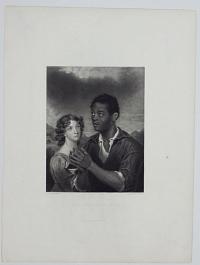
The African Prince.
Painted by H. Meyer. Engraved by R. Hicks.
Fisher, Son & Co. London, 1844.
Engraving. Plate: 230 x 145mm (9 x 5¾'').
A scene showing a young African prince embracing a young woman, holding a book.
[Ref: 49953] £65.00
(£78.00 incl.VAT)
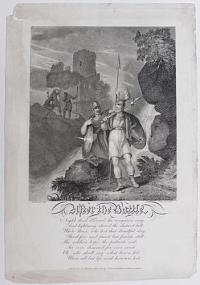
After the Battle, / Night closed around the conqueror's way, / And lightnings show'd the distant hill...
Pocock Jn.r Del.t. J. Minasi Sculp.t.
Pub'd as the Act directs Jan.y 1810 by W. Power, Dublin & J. Power, London.
Stipple & engraving. 340 x 230mm (13¼ x 8¾"). Stained.
A scene from 'After The Battle', by the Irish poet Thomas Moore (1779-1852), with soldiers armed with shields, spear and mace standing before a ruined castle. Published as an illustration in 'A Selection of Irish Melodies with symphonies and accompaniments by Sir John Stevenson Mus. Doc and Characteristic words by Thomas Moore, Esq.'.
[Ref: 34205] £140.00
(£168.00 incl.VAT)
![[Alchemist in his study- illustration to Erasmus, 'In Praise of Folly'?]](img-thumbnail/jpegs/46499.jpg)
[Alchemist in his study- illustration to Erasmus, 'In Praise of Folly'?] Le docteur et ses attributs
C. Eisen inv.
a Paris chez Basan [c.1760]
Engraving, platemark 140 x 85mm (5¼ x 3¼"). 'Eloge de la Folie' in ms lower left.
Book illustration after Charles Eisen (1720-78), painter, draughtsman and illustrator. It was through his drawings, engraved to illustrate nearly 400 books, that Eisen's reputation was chiefly established. These also included editions of Lucretius, Ovid, Tacitus, Virgil, Boccaccio, Ariosto, La Fontaine and Erasmus.
[Ref: 46499] £180.00
(£216.00 incl.VAT)
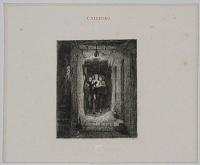
L'Allegro To bed they creep [ms]
C.W.C. / 1848
[Published for the Etching Club by Joseph Cundall, 12, Old Bond Street, 1849]
Etching on india, sheet 130 x 160mm (5 x 6¼"). Trimmed
Scene illustrating John Milton's poem 'L'Allegro', by history painter Charles West Cope (1811-90). From an edition of the poem with twenty illustrations by members of the Etching Club, of which Cope was a founding member. Cope is primarily remembered for his frescoes in the House of Lords and the peers' corridor, but in addition to his academic renderings of historical and literary subjects, he was a talented printmaker.
[Ref: 35888] £75.00
(£90.00 incl.VAT)
![[L'Allegro]](img-thumbnail/jpegs/35900.jpg)
[L'Allegro]
Tho.s Creswick
[Published for the Etching Club by Joseph Cundall, 12, Old Bond Street, 1849]
Etching on india, letterpress printed in red, sheet 150 x 165mm (6 x 6½"). Trimmed.
Scene illustrating John Milton's poem 'L'Allegro' by landscape painter Thomas Creswick (1811-69). From an edition of the poem (which had long been a popular subject for visual artists) with twenty illustrations by members of the Etching Club, published in 1849. Creswick exhibited prolifically and successfully at the Royal Academy throughout his career (he became an R.A. in 1851) and his etchings 'demonstrate a sure grasp of the technique and conventions of etching (DNB). Ray 217
[Ref: 35900] £75.00
(£90.00 incl.VAT)
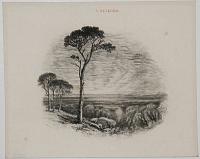
L'Allegro
T. Creswick
[Published for the Etching Club by Joseph Cundall, 12, Old Bond Street, 1849]
Etching on india, letterpress printed in red, sheet 135 x 165mm (6½ x 6¼"). Trimmed.
Scene illustrating John Milton's poem 'L'Allegro' by landscape painter Thomas Creswick (1811-69). From an edition of the poem (which had long been a popular subject for visual artists) with twenty illustrations by members of the Etching Club, published in 1849. Creswick exhibited prolifically and successfully at the Royal Academy throughout his career (he became an R.A. in 1851) and his etchings 'demonstrate a sure grasp of the technique and conventions of etching (DNB). Ray 217
[Ref: 35899] £75.00
(£90.00 incl.VAT)
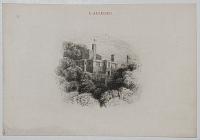
L'Allegro Towers + Battlements it sees [ms]
[by Thomas Creswick]
[Published for the Etching Club by Joseph Cundall, 12, Old Bond Street, 1849]
Etching on india, letterpress printed in red, sheet 110 x 165mm (4¼ x 6¼"). Trimmed; very slight foxing.
Scene illustrating John Milton's poem 'L'Allegro', by landscape painter Thomas Creswick (1811-69). From an edition of the poem with twenty illustrations by members of the Etching Club published in 1849. Creswick exhibited prolifically and successfully at the Royal Academy throughout his career (he became an R.A. in 1851) and his etchings 'demonstrate a sure grasp of the technique and conventions of etching (DNB). Ray 217
[Ref: 35897] £75.00
(£90.00 incl.VAT)
![[L'Allegro]](img-thumbnail/jpegs/35898.jpg)
[L'Allegro] Tower'd cities please us then [ms]
[by Thomas Creswick]
[Published for the Etching Club by Joseph Cundall, 12, Old Bond Street, 1849]
Etching on india, letterpress printed in red, sheet 110 x 165mm (4¼ x 6¼"). Trimmed; slightly dusty.
Scene illustrating John Milton's poem 'L'Allegro' by landscape painter Thomas Creswick (1811-69). From an edition of the poem (which had long been a popular subject for visual artists) with twenty illustrations by members of the Etching Club, published in 1849. Creswick exhibited prolifically and successfully at the Royal Academy throughout his career (he became an R.A. in 1851) and his etchings 'demonstrate a sure grasp of the technique and conventions of etching (DNB). Ray 217
[Ref: 35898] £75.00
(£90.00 incl.VAT)
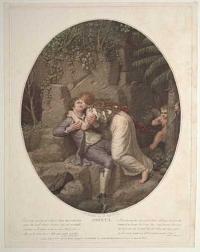
Aminta.
P. Bettelini inv. et sculp.t.
London, publish'd 8 8bre 1788 by Molteno Colnaghi & Co 132 Pall Mall. A Paris chez Tessari Zanna et Cie Quais des Augustins no.42
Stipple, printed in colours. 330 x 250mm (130 x 9¾"). Small margins.
Silvia embraces Aminta on a rocky outcrop, watched by Cupid. A scene from 'Aminta', the 1573 play by Torquato Tasso's (1544-95). Despite being a pastoral set in the time of Alexander the Great, Aminta is in contemporary dress. Ex: Oettingen-Wallerstein collection. Sotheby's London / Milan Nov 1997.
[Ref: 60313] £360.00
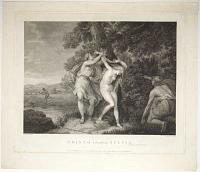
Aminto releasing Sylvia. Vide Tasso's Aminto, Act III, Scene 1.
C. R. Ryley pinxit W. Skelton sculpsit.
London Publish'd as the Act directs, March 24.th 1788, by W. Skelton, Engraver, No. 23, Hay Market.
Etching with engraving. 340 x 415mm (13½ x 16¼"), very large margins. A little spotting, mainly in margins.
Aminta unties the nymph Silvia from a tree. The satyr who had attempted to rape her flees in the background. A scene from 'Aminta', the 1573 play by Torquato Tasso's (1544-95). Ex: Oettingen-Wallerstein collection. Sotheby's London / Milan Nov 1997.
[Ref: 60344] £320.00

Angelica and Medora.
G.B. Cipriani inv. F. Bartolozzi sculps.
Published July 1st 1787 by John & Josiah Boydell No 90 CHeapside London. Bit later.
Stipple, printed in colours, J. Whatman Turkey Mills watermark 1822; 265 x 310mm (10½ x 12¼"), with large margins. Small hole in top margin. Slight printer's crease.
A portrait of lovers Angelica and Medoro, characters in Ludovico Ariosto's 'Orlando Furioso'.
[Ref: 54231] £180.00
(£216.00 incl.VAT)
![[The Antiquary.] S.t Ruth's Priory.](img-thumbnail/jpegs/60654.jpg)
[The Antiquary.] S.t Ruth's Priory.
Printed in Oil Colours by G. Baxter, the Inventor and Patentee. XI Northampton Square. Licenses Granted to work the process.
[n.d., c.1850.]
Baxter print, trimmed and laid on printed card with the red stamp, as issued. Sheet 220 x 145mm (8¾ x 5¾"). Some spotting on backing card.
A location in Sir Walter Scott's 'The Antiquary', the third of the Waverley novels and his own favourite. St Ruth's Priory is believed to have a buried treasure. It is said this is based on Arbroath Abbey in Scotland. Eleven blocks were used for this print.
[Ref: 60654] £60.00
(£72.00 incl.VAT)
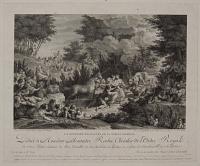
La Fontaine Enchantée de la Verité d'Amour. Dédiée à Monsieur Alexandre Roslin, Chevalier de l'Ordre Royal [...]
Dessiné par C.N. Cochin, Chevalier de l'Ordre de St. Michel / Gravé a l'Eau forte par Aug. de St Aubin, et terminé au Burin par C.F. Macret
a Paris chez Demonchy Graveur Cloitre St. Benoit la 1.re porte cochere à gauche par la rue des Mathurins A.P.D.R.
Engraving, sheet 315 x 380mm (12½ x 15"). Trimmed inside platemark; glued to backing sheet.
Illustration to Honoré d'Urfé's prose romance 'Astrée': Celadon, Silvandre, Astrée and Diane, followed by two unicorns, approach the enchanted fountain of the truth of love, which is protected by two lions.
[Ref: 38615] £180.00
(£216.00 incl.VAT)
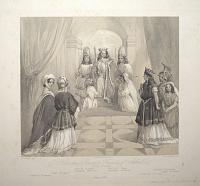
Scene from Racine's Tragedy of Athalie.
Victoria R. delt. Edmond Morin, lith.
Day & Son, Lithrs. to The Queen. January, 1853.
Lithograph, sheet 285 x 384mm (11¼ x 15"). Very slight foxing.
Scene from Racine's 'Athalie' with parts played by the Royal Family; interior with the young Joas, King of Judah, seated on a throne in the centre. In the foreground stands Joad, the high priest, and Athalie, with Abner, the captain of the Guard, in armour. These and the other characters are captioned below the image. A rare lithograph, from a sketch by Queen Victoria.
[Ref: 53263] £190.00
(£228.00 incl.VAT)

Scene from Racine's Tragedy of Athalie.
Victoria R. delt. Edmond Morin, lith.
Day & Son, Lithrs. to The Queen. January, 1853.
Lithograph, sheet 285 x 384mm. Foxing.
Scene from Racine's 'Athalie'; interior with the young Joas, King of Judah, seated on a throne in the centre. In the foreground stands Joad, the high priest, and Athalie, with Abner, the captain of the Guard, in armour. These and the other characters are captioned below the image. A rare lithograph, from a sketch by Queen Victoria. Ex: Collection of Alec Clunes.
[Ref: 7878] £180.00
(£216.00 incl.VAT)
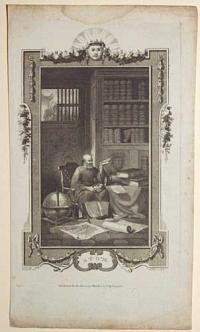
Atom.
Corbould del. Walker sculp.
Published as the Act directs by Harrison & Co. APril 15 1786.
Engraving. 115 x 180mm (4½ x 7"). Trimmed to plate on left, damp stains. Large margins on 3 sides.
A 'Japanese' man sits in his study holding up a piece of paper lettered with 'Hob Nob', surrounded by books, a globe and a pair of compasses. A frontispiece to 'The Novelist's Magazine' when it published Tobias Smollett's novel 'The History and Adventures of an Atom', a satire of British politics during the Seven Years' War.
[Ref: 56784] £50.00
(£60.00 incl.VAT)
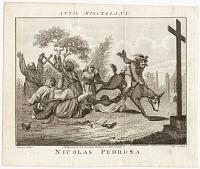
Nicolas Pedrosa. Attic Miscellany.
Drawn by Collings. Etch.d by Barlow.
Published as the Act directs, by Bentley & C.o Feb.y 1.st 1791.
Etching, plate 195 x 230mm (7¾ x 9"). Folding creases, as normal, small tear and stain to bottom edge. Small margins.
A scene from 'The History of Nicolas Pedrosa, and His Escape from the Inquisition in Madrid. A Tale'. Surgeon and male-midwife Nicolas Pedrosa on a horse causes havoc among a group of friars wearing cassocks, carrying crosses and rosaries. The next morning, Pedrosa receives a summons from the Inquisition, an especially worrisome situation for him as he is secretly a Jew. Jewish interest. The print was issued in the 'Attic Miscellany' in 1791. Not in BM.
[Ref: 59543] £230.00
(£276.00 incl.VAT)
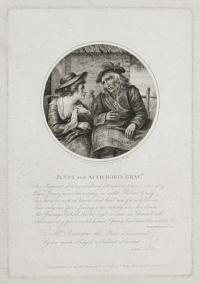
Jenny and Auld Robin Gray. The Summer it was smiling all nature round was gay...
Painted in Miniature by S. Shelley. Engraved by J. Ryder.
London. Published as the Act directs June 20th 1785, by S. Watts, No.50 opposite Old Round Ct. Strand.
Stipple. Plate: 200 x 140mm (8 x 5½'') very large margins. Bit dusty.
An illustration to Lady Anne Lindsay's 1772 poem 'Auld Robin Gray'.
[Ref: 48073] £140.00
(£168.00 incl.VAT)
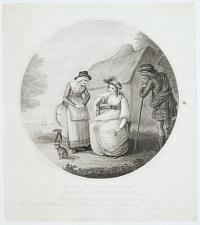
My Father urg'd me sair, my Mother did nae speak, / But she look'd in my Face till my heart was like to break. / Auld Robin Grey To Her Grace the Dutchess of Hamilton and Brandon, This Print after an Original Drawing by H. Bunbury Esq.r is with the greatest respect Dedicated, by Her Graces most obedient humble servant, W. Dickinson
H. Bunbury Esq.r Delin.t Engraved by F. Bartolozzi
London, Publish'd Feb.y 10th 1783 by W. Dickinson Engraver & Printseller No 158 New Bond Street
Stipple, sheet 410 x 365mm (16 x 14¼"). Trimmed inside platemark; small stain on right.
Illustration to 'Aud Robin Grey', a Scots ballad in which a young woman is compelled by her parents to marry an old man, Robin Grey, who promises to support her and her parents, even though she is in love with another man. Stipple engraving after Henry Bunbury, an amateur printmaker who subsequently enjoyed a successful career as a designer for printsellers. 'Prints by Bunbury an his imitators were conspicuously 'polite' and appealed, like novels, 'To the Fashionable World and Polite circles'. Of good family, amply endowed with social skills, a beautiful wife and connections in high society, Bunbury's appeal was not solely aesthetic' and his admirers 'recognized his comic talent, his informed enthusiasm for literature, and his ability to draw a momentary pang with something of the sensitivity with which Sterne could write it' (Tim Clayton). Calabi & De Vesme 1404 iii/iii
[Ref: 45439] £180.00
(£216.00 incl.VAT)
![[The Introduction of Auld Robin Grey to Jenny].](img-thumbnail/jpegs/33136.jpg)
[The Introduction of Auld Robin Grey to Jenny].
[Published by R. Sayer] [n.d., c.1780].
Engraving. Sheet: 245 x 320mm (9½ x 12½"). Trimmed to image.
A man wearing a tartan cloak greets a young woman sitting on a bench spinning. An old woman stands beside her. An illustration of a Scottish ballad called 'Auld Robin Grey' written by Lady Anne Lindsay in 1772. The ballad tells the story of Robin Gray who marries a young woman already in love with a sailor called Jamie (or Jemmy) who returns from sea shortly after the marriage.
[Ref: 33136] £95.00
(£114.00 incl.VAT)

The Children in the Wood.
Drawn by J.H. Benwell. The Figures engraved by W.Sharp. The Landscape by W. Byrne & T. Medland.
Published as the Act directs, 20 May, 1786, by W. Byrne, No.19 Titchfield Street, London.
Engraving. 275 x 305mm (10¾ x 12")
A scene from the folk tale better known as the 'Babes in the Wood'. The two children, abandoned by the men paid by their uncle to kill them, die lost in the woods and are covered with leaves by robins.
[Ref: 623] £160.00
(£192.00 incl.VAT)

The Children in the Wood. Their pretty lips with blackberries, Were all besmear'd and dyed, And when they saw the darksome night. They sat them down and cried [...]
Benwell pinx.t L. C. Ruotte sc. Se vend a[?] Paris chez Arthur et Compagnie, a la Manufacture de Papiers au coin de la rue [...] le Boulevard.
Paris, 1914.
Coloured engraving. 280 x 320mm (12½ x 11"), with wide margins. Some creasing in upper right corner.
A scene from the English folk tale better known as 'The Babes in the Wood'. Abandoned in the forest, the two children fall asleep at dusk.
[Ref: 54080] £450.00

In lance Vatis abstulit caesum caput. Buchanan Bayt.
Pet: Schenck fec et exc.
Amstelod: cum Privil. [n.d. c.1700]
Rare mezzotint, 18th century watermark, sheet 250 x 185mm (10 x 7¼"). Trimmed to plate.
A scene from George Buchanan's (1506 –82) tragedy 'The Baptist' (Baptistes). Title translates from latin as 'He removed the severed head on a tray.' A person in oriental dress, including turban, holds the the head of John the Baptist on a tray.
[Ref: 60427] £140.00
(£168.00 incl.VAT)
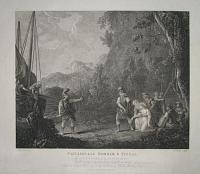
Fainasollis Borbar & Fingal... Vide Macpherson's Ossian Poem of Fingal, book 3.d.
Barralet delin. T.Parker sculp.t.
London: Published by J.Deeley, March 1, 1809, 95 Berwick St, Soho.
Engraving. 440 x 500mm. On Whatman paper watermarked 1808.
According to the Scottish poet James Macpherson's interpretation of Celtic mythology, Fainasollis, the daughter of the king of Craca, was slain by Solis and avenged by Fingal.
[Ref: 7332] £180.00
(£216.00 incl.VAT)

The Beggar's Opera. Jenny. I must and will have a kiss to give my wine a zest. Act 2 Scene 1.
Burney pinx. Bartolozzi Sc.
London Printed for J. Bell, British Library, Strand, July 9, 1791.
Etching with engraving, pt 18th century watermark. 200 x 130mm (8 x 5"), large margins. Some foxing, mainly in margins.
Macheath sits with arms around two women. One of six frontispieces to 'British Theatre'. De Vesme 167, state iii of iii.
[Ref: 55517] £65.00
(£78.00 incl.VAT)
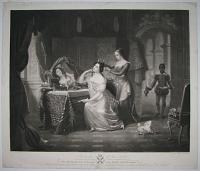
Belinda at her Toilet. "A heavenly image in the glass appears, "To that she bends to that her eyes she rears." Pope. The Rape of the Lock. Canto I. To John Fitz-Gerald Esqr. Of Naseby in the County of Northampton &c.&c.&c. This plate from a picture in his collection is with his permission respectfully dedicated by his most obliged and devoted Servant. H. Fradelle.
Painted by Henry Fradelle. Engraved by W. Say, Engraver to H.R.H. the Duke of Gloucester. No.9. Mortimer Street, Cavendish Square.
London, Published June 24. 1824 by Messrs Colnaghi & Co. 23. Cockspur Street.
Mezzotint, very fine, plate 858 x 681mm. 33¾ x 26¾". Trimmed to plate. Tear in title area.
A young woman gazing into the mirror on her vanity table, with a letter in her left had. A young lady attends to her hair and a servant enters through the doorway. A dog stands bottom right. After a painting by Henri Jean-Baptiste Victoire Fradelle (1778-1865). Ex: Collection of The Hon. C. Lennox-Boyd.
[Ref: 14767] £260.00
(£312.00 incl.VAT)
![[The Belly and the Members.]](img-thumbnail/jpegs/39308.jpg)
[The Belly and the Members.]
WHollar fec. [after Francis Clein.]
[London: John Ogilby, 1668.]
Etching. 255 x 175mm (10 x 7").
A naked figure with no head and a face on its torso, sword in right hand, a head on the floor, apparently just decapitated. An illustration from the second edition of John Ogilby's 'Fables of Æsop Paraphras'd in Verse: Adorned with Sculpture and Illustrated with Annotations', with titlepage and 81 plates, of which 56 were etched by Wenceslaus Hollar. 'One fine day it occurred to the Members of the Body that they were doing all the work and the Belly was having all the food. So they held a meeting, and after a long discussion, decided to strike work till the Belly consented to take its proper share of the work. So for a day or two, the Hands refused to take the food, the Mouth refused to receive it, and the Teeth had no work to do. But after a day or two the Members began to find that they themselves were not in a very active condition: the Hands could hardly move, and the Mouth was all parched and dry, while the Legs were unable to support the rest. So thus they found that even the Belly in its dull quiet way was doing necessary work for the Body, and that all must work together or the Body will go to pieces.' Pennington 368, state ii of ii.
[Ref: 39308] £320.00
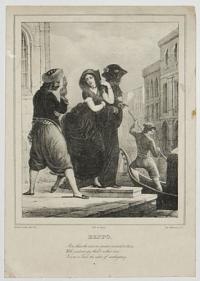
Beppo. More than the rest one person seemed to stare. / With pertinacity that's rather rare. / It was a Turk the color of Mahogany.
William Locke Jun.r del. Lith. de Villain. V. de Villeneuve lith.
[n.d., c.1830.]
Lithograph. Printed area 205 x 140mm (8 x 9½"). Crease.
A scene from Lord Byron's 'Beppo: A Venetian Story'. A Venetian lady, Laura, off to attend the Venetian Carnival with her lover, is stalked by her long-lost husband, who had been captured by Barbary pirates. Revealing himself, Beppo accepts his wife's actions and befriends the lover. Byron's poem argues that the English attitude to adultery is hypocritical compared to the custom of the 'Cavalier Servente; in Italy.
[Ref: 41745] £70.00
(£84.00 incl.VAT)
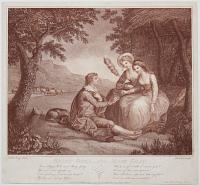
Bessy Bell and Mary Gray.
S. Harding delin. Delatre sculp.t.
London, Publish'd Aug.t 1. 1787 by T. Macklin N.39 Fleet Street.
Stipple printed in sepia. Sheet 250 x 270mm (9¾ x 10½"). Trimmed within plate,
A scene from Allan Ramsay's poem: a tartan-clad boy draws straws to choose between two beautiful shepherdesses.
[Ref: 44107] £140.00
(£168.00 incl.VAT)

The Beggar of Bednall Green and his Daughter. With that an angel he cast on the ground,/ And dropped, in angels, full three thousand pound/ Thus was the fair Bessee matched to a knight/ And then made a ladye in others despite/ A fairer lady there never was seen/ Then the blind beggar's daughter of Bednall Green. [&] The Beggar of Bednall Green, his Daughter and the Knight. To church then went this gallant young knight,/ His bride followed after, an angel most bright,/ With troops of ladyes the like never was seen/ That went with sweet Bessee of Bednall Green' In joy and felicity lon lived he,/ All with his fair ladye the prettye Bessye.
R. Pollard fect. Aquatinted by J. Wells [first plate]. Aquatinted by J. Jukes [second plate].
London, Published Septr. 6, 1787, by R. Pollard, Engraver, No.15, Braynes Row, Spa Fields.
Pair of aquatints with etching, each c.327 x 275mm.
A fine pair of prints that illustrate the popular Elizabethan ballad 'The Blind Beggar of Bethnal Green'. This tells the story of Henry de Montfort, a son of Simon de Montfort. He was wounded and lost his sight in the Battle of Evesham in 1265, and was nursed to health by a baroness, and together they had a child named Besse (commemorated in Besse Road in London's East End). He became the Blind Beggar of Bethnal Green and used to beg at the crossroads. The story of how he went from landed gentry to poor beggar became hugely popular in the Tudor era, and was revived by Percy's 'Reliques of Ancient English Poetry', published in 1765. The legend came to be incorporated into the arms of the Metropolitan Borough of Bethnal Green in 1900. Published by Robert Pollard (c.1755 - 1838) after his own designs.
[Ref: 8101] £490.00
view all images for this item
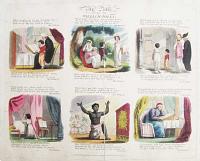
My Bible, by William Jolly.
London, Published July 16th 1812 by William Darton Jun.r 58 Holborn Hill.
Coloured etching. 240 x 395mm (9½ x 15½). Trimmed to plate, split in centre fold, laid on album paper.
Six scenes illustrating 12 verses of Christian morality. Centre bottom shows image of an African.
[Ref: 58498] £240.00
(£288.00 incl.VAT)
![[10 illustrations from Dickens's Bleak House.]](img-thumbnail/jpegs/27536.jpg)
[10 illustrations from Dickens's Bleak House.] Frontispiece. [&] The Ghost's Walk. [&] Sunset in The long drawing-room at Chesney Wold. [&] Tom All Alone's. [&] A new meaning in The Roman. [&] Shadow. [&] The Lonely Figure. [&] The Night. [&] The Morning. [&] The Mausoleum at Chesney Wold.
[Drawn by Phiz.]
[London: Bradbury & Evans, c.1853.]
Ten steel etchings. Ech c. 230 x 140mm, 9 x 5½".
Ten illustrations by Phiz (pseudonym of Hablot Knight Brown) for Charles Dickens's 'Bleak House'.
[Ref: 27536] £250.00
(£300.00 incl.VAT)
view all images for this item

![[Life of Aesop: Aesop convicting his fellow servants of having eaten the figs.]](img-thumbnail/jpegs/48708.jpg)
![[Life of Aesop: Aesop resolving the gardener's problem.]](img-thumbnail/jpegs/48712.jpg)
![[Life of Aesop: Aesop ordered by Xanthus to take a dish to her that loves him best.]](img-thumbnail/jpegs/48699.jpg)
![[Life of Aesop: Aesop serving tongues.]](img-thumbnail/jpegs/48715.jpg)
![[Life of Aesop: Aesop taken to prison.]](img-thumbnail/jpegs/48710.jpg)
![[Life of Aesop: Beaten by Xanthus.] [Philosophers like Fortune-tellers thrive,](img-thumbnail/jpegs/48698.jpg)
![[Life of Aesop: Aesop kneeling before king Croesus.]](img-thumbnail/jpegs/48714.jpg)
![[Life of Aesop: Aesop welcomed on his return to Samos from the court of Lydia.]](img-thumbnail/jpegs/48707.jpg)
![[Life of Aesop: Aesop falsely accused by Eunus, his adopted son.]](img-thumbnail/jpegs/48713.jpg)
![[Life of Aesop: Aesop in the sepulchre fed by Hermippus.]](img-thumbnail/jpegs/48701.jpg)
![[Life of Aesop: Eunus confronted by Aesop.]](img-thumbnail/jpegs/48700.jpg)
![[Life of Aesop: Aesop with King Nectenabo, king of Egypt.]](img-thumbnail/jpegs/48711.jpg)
![[Life of Aesop: the death of Aesop.]](img-thumbnail/jpegs/48706.jpg)
![[Life of Aesop: Aesop bought by the philosopher Xanthus.]](img-thumbnail/jpegs/48702.jpg)
![[Life of Aesop: Aesop passing the house of the father of Xanthus's wife.]](img-thumbnail/jpegs/48703.jpg)
![[The Satyr and the Peasant.] Iste frigus & ardorem [...]](img-thumbnail/jpegs/57441.jpg)
![[The Satyr and the Peasant.]](img-thumbnail/jpegs/57789.jpg)


![[Alchemist in his study- illustration to Erasmus, 'In Praise of Folly'?]](img-thumbnail/jpegs/46499.jpg)

![[L'Allegro]](img-thumbnail/jpegs/35900.jpg)


![[L'Allegro]](img-thumbnail/jpegs/35898.jpg)



![[The Antiquary.] S.t Ruth's Priory.](img-thumbnail/jpegs/60654.jpg)







![[The Introduction of Auld Robin Grey to Jenny].](img-thumbnail/jpegs/33136.jpg)






![[The Belly and the Members.]](img-thumbnail/jpegs/39308.jpg)




![[10 illustrations from Dickens's Bleak House.]](img-thumbnail/jpegs/27536.jpg)